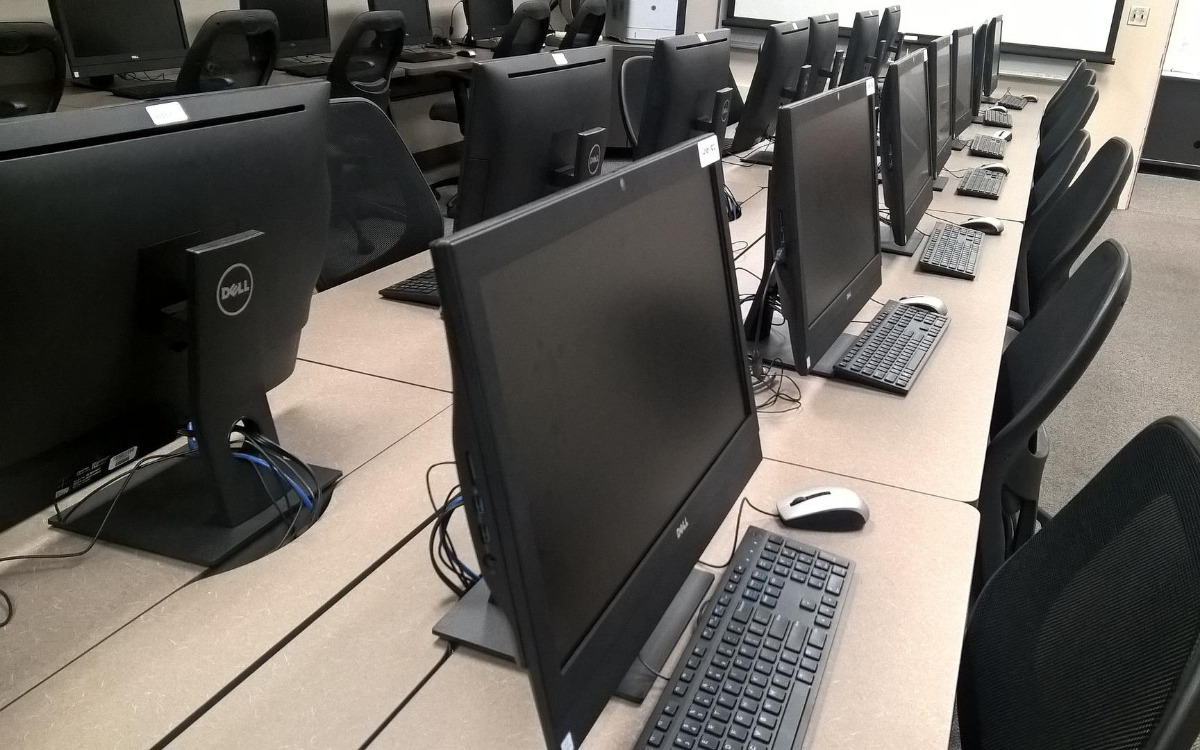Classrooms have continued to digitize, and teaching methods have evolved along with them. Teachers can give lessons online, eBooks make studying portable, and software changes how students learn. As technology plays a growing role, 81% of teachers, 88% of principals, and 92% of administrators agree that digital learning tools provide great value to classrooms. Yet, 65% of administrators discontinued some learning tools due to a lack of student improvements.
Since effectiveness can vary, the impact of digitization depends on many factors. An analysis by McKinsey & Company suggests that teachers using technology lead to higher PISA scores than those who don’t. Students using the same devices saw the largest benefit from data projectors and internet-connected computers. In contrast, student tablet usage in classrooms resulted in scores declining.
That shows that technology is helpful for teachers, and some can benefit students too. To meet those needs, IT has become a core component in keeping classrooms connected digitally. With growing demands and limited budgets, school districts have been seeking the help of outsourced IT companies.
Losing Time to IT Issues
Many people tolerate IT issues throughout their day. Small things can add up over time, whether it’s a printer with an unstable network connection or software that responds slowly. On average, workers spend 22 minutes a day on IT-related issues, which can lead to a loss of over 90 hours a year. The impact on students is not well-studied. However, as technology is integrated into their workflow, IT problems can also disrupt their learning process.
Knowing When to Outsource IT
Many school districts operate on notoriously tight budgets. They rely on federal and state funding, local property taxes, tuition, and other means. As of 2019, 46.8% of contributions for public schools came from state governments. Another 45.4% came from local sources. Factors like inflation, the housing market, student populations, and staff hiring can also influence how far that goes.
Due to less predictable elements, school boards are often frugal with spending. That ensures funding doesn’t run out. That means resources are prioritized in the highest-need areas. Predicting future expenses isn’t easy, though. Staff complaints are a common sign of underlying IT issues, but that doesn’t always provide a tangible problem or solution.
To help, many IT outsourcing companies can provide an IT consultation as a starting point. Rather than relying on word-of-mouth, a specialist can do an objective analysis with practical input. They can also advise on impactful ways to use a limited budget and help discover wasted expenses. That gives schools an informed perspective on whether they would benefit from more IT services.
How Outsourced IT Can Help School Districts
Cost Savings: In-house IT teams are often left waiting for issues while being paid for their availability. Even though having on-call IT staff is helpful, it’s not always cost-effective for school districts. Outsourced IT makes specialists available on demand and at a lower cost. That frees up additional funding for other critical needs.
Helpdesk Support: An IT team is available as needed through a helpdesk. They can often fix quick requests through simple troubleshooting or virtual access to the device. When using a local provider, the company can send a specialist to help if they can’t solve it remotely.
Productivity: Dealing with routine IT issues can be stressful and distracting. Even if people are willing to tolerate them, it can make staff less efficient and unhappy. With students relying on technology, too, it can also impact their class performance.
Scalability: IT problems are rarely one-size-fits-all. That means the response needed to react to each issue can vary greatly. Something small may require only one person an hour or two. But, a disaster might need an entire team to pull an all-nighter to have it fixed by morning. Outsourced IT teams have larger staff pools to work with, allowing them to meet problems of any size.
Remote Learning: Most schools are now offering remote learning options. Doing so helps maintain a stable learning environment when students cannot attend in person. As such, it’s created extra device needs, network capabilities, and teacher skillsets.
IT Compliance: School districts manage valuable student data. That ranges from recordkeeping to personal identifying information. Maintaining IT compliance is essential to keeping student and staff data safe. It also helps prevent districts from legal and financial consequences from mishandling.
Staff Training: A learning curve comes with new software, hardware, or policy changes. IT companies can give simple training guides, one-sheets, FAQS, and other resources to help smooth the process. Besides solving IT problems, helpdesk support can also answer routine user questions.
Technology Upgrades: There are many aspects to how upgrades are handled. Upgrading too soon can waste money, while waiting too long can lead to lost productivity. The goal is to find a balance between affordable cost and long-term reliability. As experts in the field, an outsourced IT company can help with that process.
Choosing The Right Outsourced IT Company
- How much experience do you have with schools?
- Do you provide both on-site and remote IT services?
- What kind of IT compliance are you qualified to handle?
- Is fully outsourced IT an offered service?
- During what hours is the helpdesk available?
- Do you offer any guarantees for your IT services?
- What kind of cybersecurity can be implemented?
- How long have you been in business?
- Do you have enough staff to serve our needs?
- Can the cost of services be aligned with a set budget?
Corporate websites can answer many questions, but direct contact is usually the best way to get more information. Doing so can provide insight into their services, give an initial cost estimate, and may include some early suggestions.
Closing
Even though students and teachers are embracing digitization, there are still many challenges. School districts must integrate different systems, software, devices, and accounts seamlessly. The transition has created a different learning culture and offers many advantages through convenience.
Teaching strategies will continue to change as some older methods don’t translate to a digital setting. IT trends are constantly changing, too, with the adaptive learning market projected to reach $9 billion by 2028. As schools try different mixes of learning tools and teaching strategies, technologies will better cater to the needs of each student.
To take on those challenges, finding the right technology partner is essential. Companies like ITonDemand offer fully outsourced IT services, giving them the flexibility to meet the daily challenges of running a school district. They can also share insight into proven solutions that have worked for other schools. With demanding needs and strict guidelines, outsourcing is a great way to get the most IT services and value out of a limited budget.




